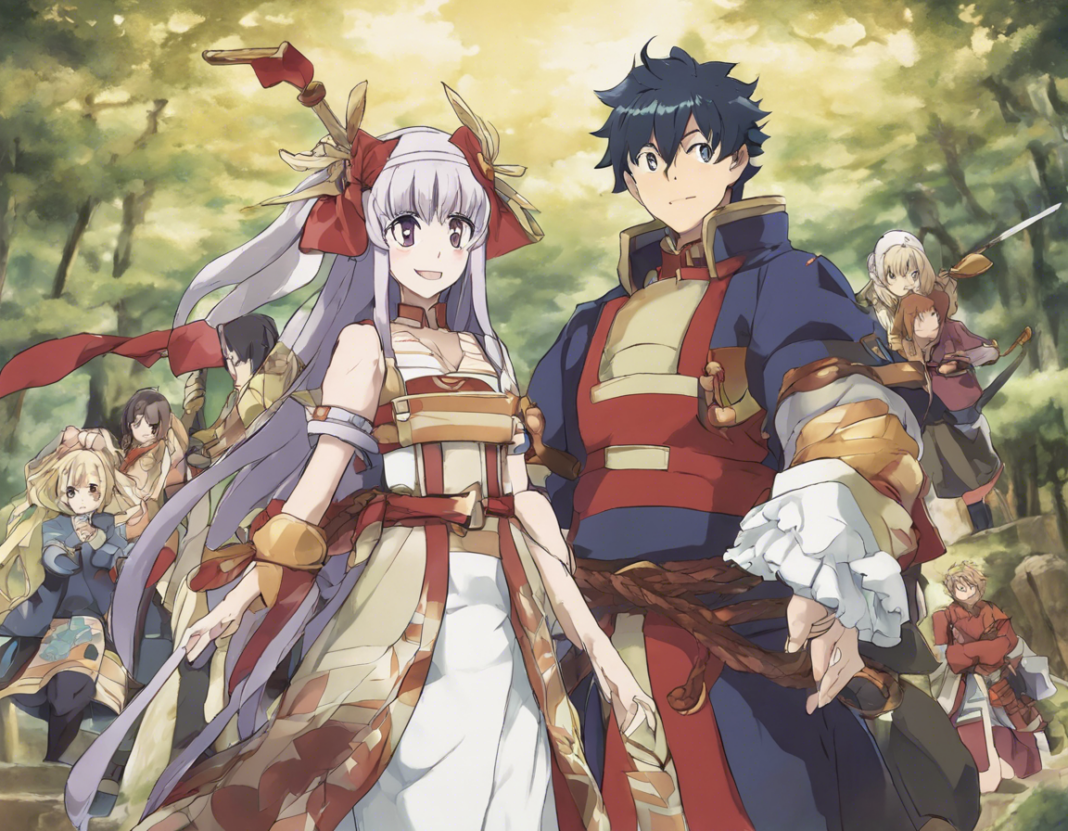Introduction
Isekai has become a dominant genre in the world of anime and manga. The concept of being transported to another world has captured the imagination of fans around the globe. Whether it’s through a portal, reincarnation, or virtual reality, the allure of a fresh start in a fantastical realm has resonated with audiences of all ages.
However, not all isekai stories are created equal. While many explore themes of heroism, adventure, and growth, some fall into common pitfalls that can detract from the overall experience. In this article, we will delve into the potential pitfalls of isekai storytelling, analyzing why they occur and how they can impact the narrative.
The Appeal of Another World
Before we dissect the pitfalls, let’s first examine why isekai series are so popular. One of the main appeals of isekai is the opportunity for escapism. In a world where the daily grind can be overwhelming, the idea of being whisked away to a place where one can gain magical abilities, form meaningful relationships, and embark on epic quests is undeniably alluring.
Furthermore, isekai stories often feature power fantasies. The protagonist is typically an ordinary individual who, upon entering the new world, discovers that they possess extraordinary abilities. This element allows viewers to imagine themselves in the shoes of the hero, experiencing the thrill of overcoming challenges and achieving great feats.
The Pitfalls of Isekai Storytelling
While isekai series have captivated audiences with their imaginative worlds and compelling characters, they are not without their flaws. Below, we will explore some of the common pitfalls that isekai stories can fall into:
1. Overreliance on Clichés
One of the most significant pitfalls of isekai storytelling is the overuse of clichés. From overpowered protagonists to harem dynamics, some series tend to recycle the same tropes without adding anything new or innovative to the genre. This can lead to predictable plotlines and stale character development, ultimately diminishing the impact of the story.
2. Lack of Worldbuilding
A well-developed fantasy world is essential for immersing viewers in the story. However, some isekai series fall short in this regard by neglecting to establish consistent rules and lore. Without a solid foundation, the world can feel hollow and unconvincing, making it difficult for audiences to invest in the narrative.
3. Unrealistic Power Escalation
While power fantasies are a staple of isekai storytelling, some series take this concept to extreme levels. Protagonists may start off as relatively weak characters only to quickly become overpowered beings capable of single-handedly defeating armies. This unrealistic power escalation can diminish the sense of challenge and risk in the story, resulting in a lack of tension and stakes.
4. Shallow Characterization
Strong character development is crucial for creating engaging and relatable protagonists. Unfortunately, some isekai series prioritize worldbuilding and plot at the expense of characterization. As a result, characters may come across as one-dimensional or stereotypical, lacking the depth and complexity needed to resonate with audiences on a deeper level.
5. Lack of Consequences
In a world where magic and fantastical elements abound, it can be tempting for writers to handwave consequences and logic in favor of convenience and wish-fulfillment. However, this can weaken the narrative by undermining the sense of risk and reward that drives character development and plot progression. Without meaningful consequences, the story may lose tension and emotional impact.
How to Avoid the Pitfalls
While these pitfalls may pose challenges to isekai storytellers, they can be avoided or mitigated with careful planning and execution. Here are some strategies to help navigate the potential pitfalls of isekai storytelling:
1. Subvert Expectations
To stand out in a crowded isekai landscape, consider subverting genre expectations. Instead of following trodden paths, introduce twists and surprises that challenge conventions and keep audiences guessing. By subverting clichés, you can breathe fresh life into the story and engage viewers in unexpected ways.
2. Focus on Worldbuilding
Take the time to craft a rich and immersive fantasy world that feels alive and vibrant. Develop unique cultures, history, and magic systems that add depth and complexity to the setting. By focusing on worldbuilding, you can create a believable and compelling backdrop for your characters to explore and interact with.
3. Establish Logical Power Progression
While power fantasies are a core element of isekai storytelling, it’s important to establish logical progression for character advancement. Avoid rapid power escalation that undermines the sense of challenge. Instead, build gradual growth for protagonists that is earned through hard work, training, and experience.
4. Prioritize Character Development
Give equal attention to character development alongside plot and worldbuilding. Create complex and multifaceted characters with depth and emotional resonance. Explore their motivations, flaws, and personal journeys to forge strong emotional connections with audiences.
5. Embrace Consequences
Embrace consequences and strive for realism in your storytelling. Challenge your characters with difficult choices and unforeseen consequences that drive growth and change. By introducing meaningful consequences, you can inject drama and tension into the narrative, keeping viewers engaged and invested.
Frequently Asked Questions (FAQs)
1. What makes a good isekai story?
A good isekai story combines engaging characters, well-developed worldbuilding, and a compelling plot. It should offer unique twists on the genre while avoiding common clichés.
2. How can I avoid falling into isekai pitfalls as a writer?
To avoid pitfalls, focus on subverting expectations, prioritizing worldbuilding, establishing logical power progression, prioritizing character development, and embracing consequences in your storytelling.
3. Are there any unique subgenres within isekai?
Yes, there are several unique subgenres within isekai, such as reincarnation, transported to another world, and virtual reality. Each subgenre offers its own twist on the concept of being transported to a different world.
4. Can isekai stories appeal to a wide range of audiences?
Yes, isekai stories can appeal to audiences of all ages and backgrounds. The genre’s themes of escapism, adventure, and growth resonate with viewers looking for fantasy, action, and emotional engagement.
5. What are some popular isekai series that avoid common pitfalls?
Some popular isekai series that have successfully navigated common pitfalls include Re:Zero – Starting Life in Another World, That Time I Got Reincarnated as a Slime, and Log Horizon. These series offer strong storytelling, compelling characters, and innovative twists on the genre.









